

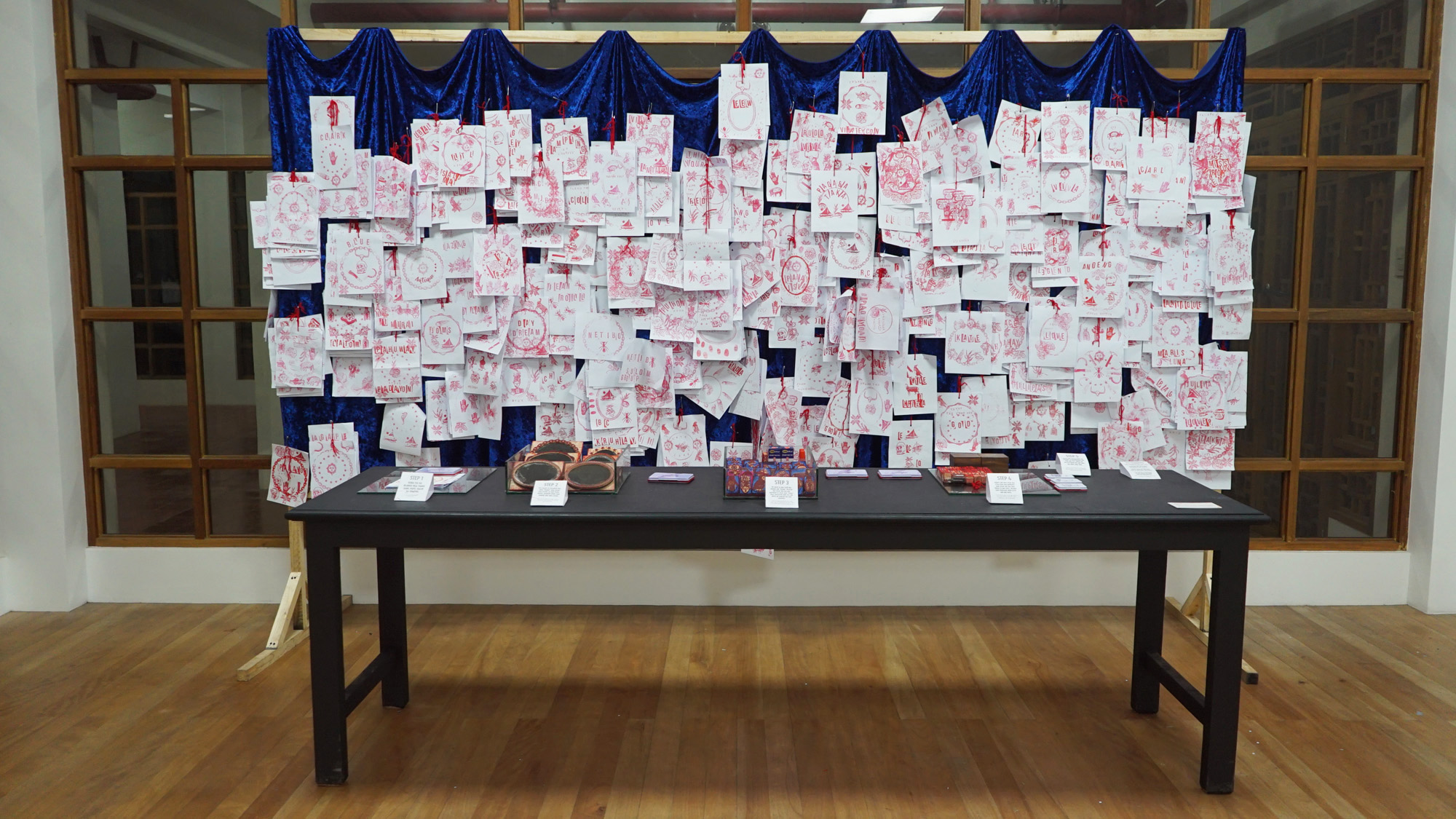

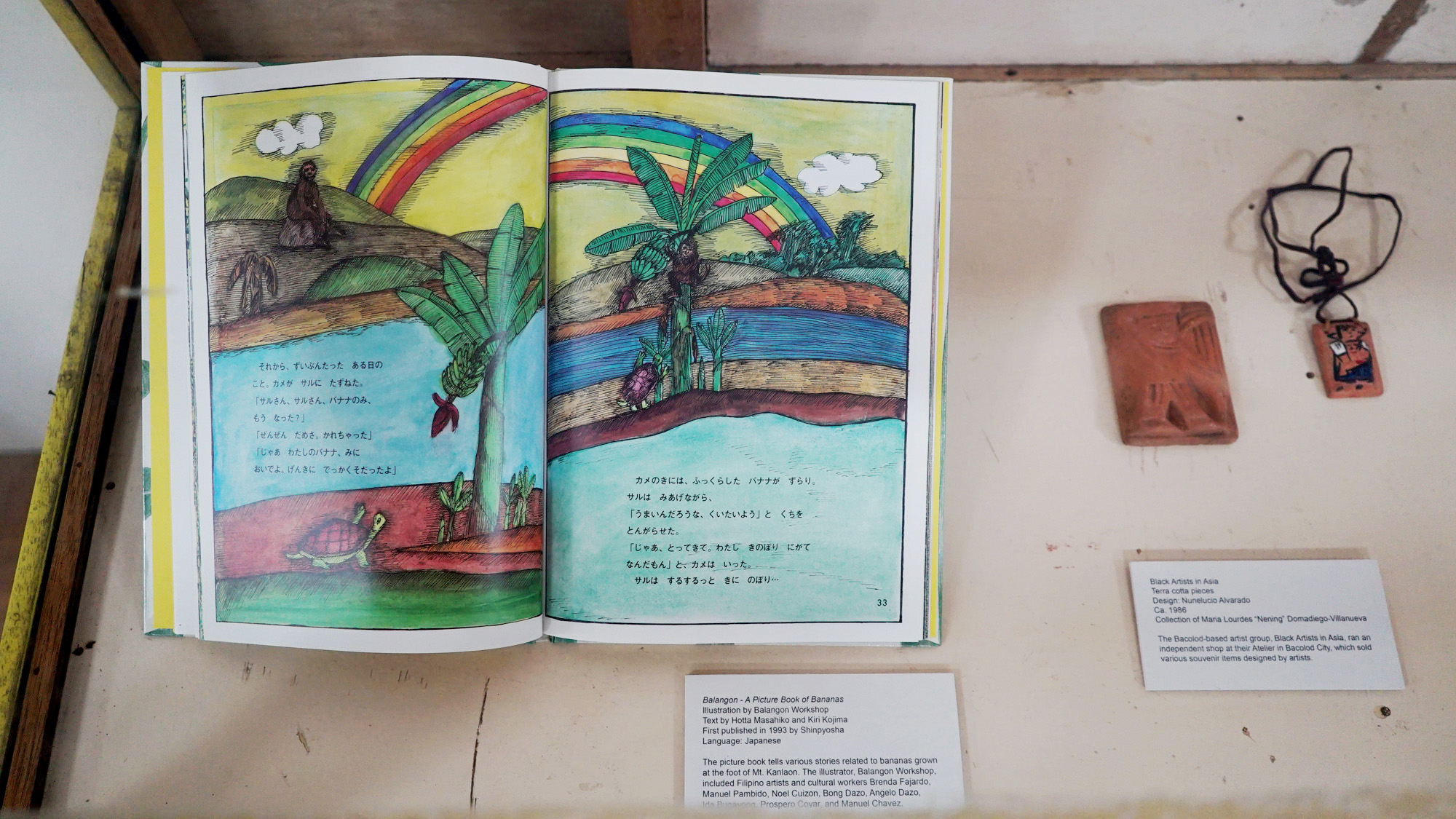
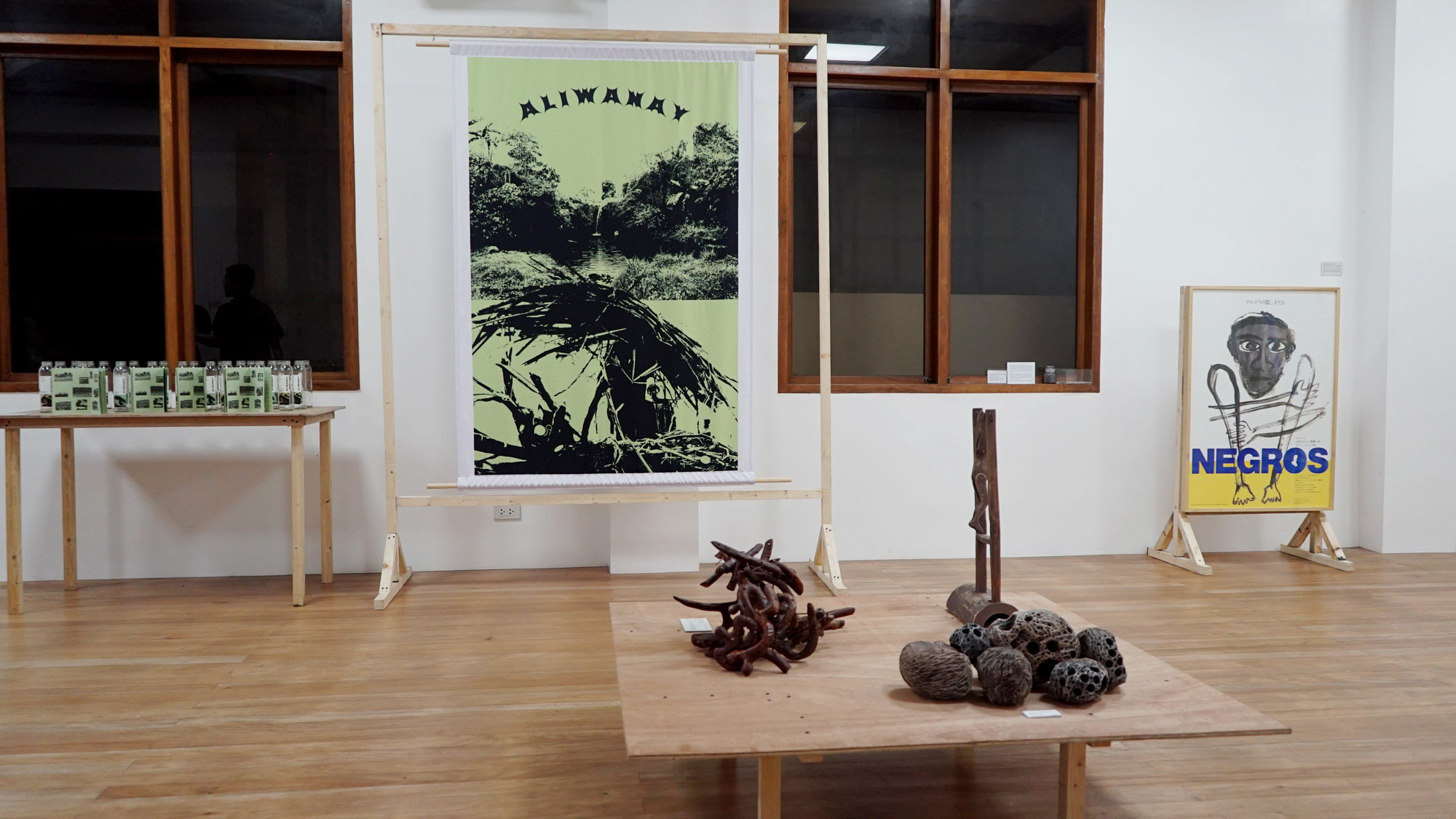

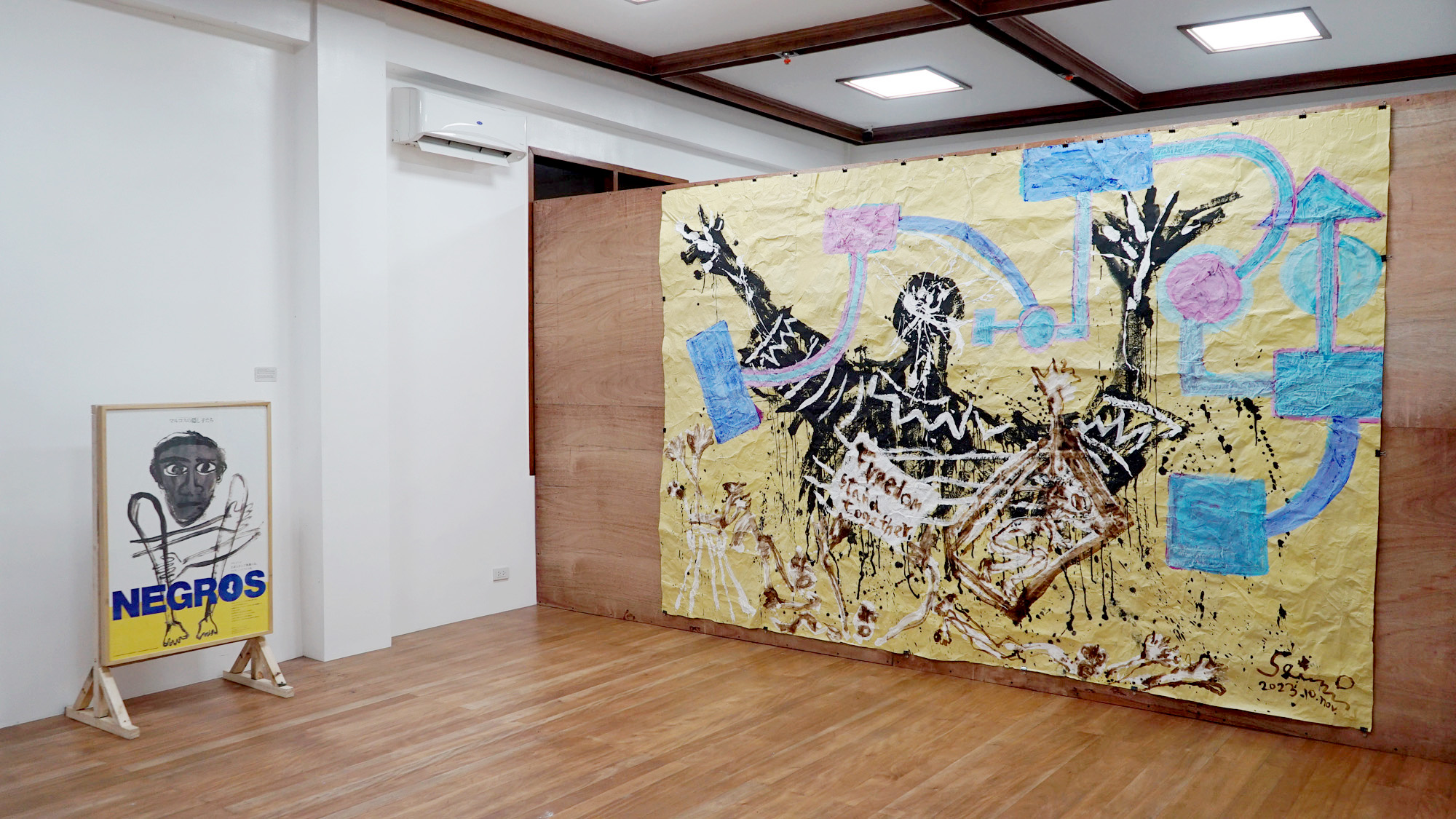

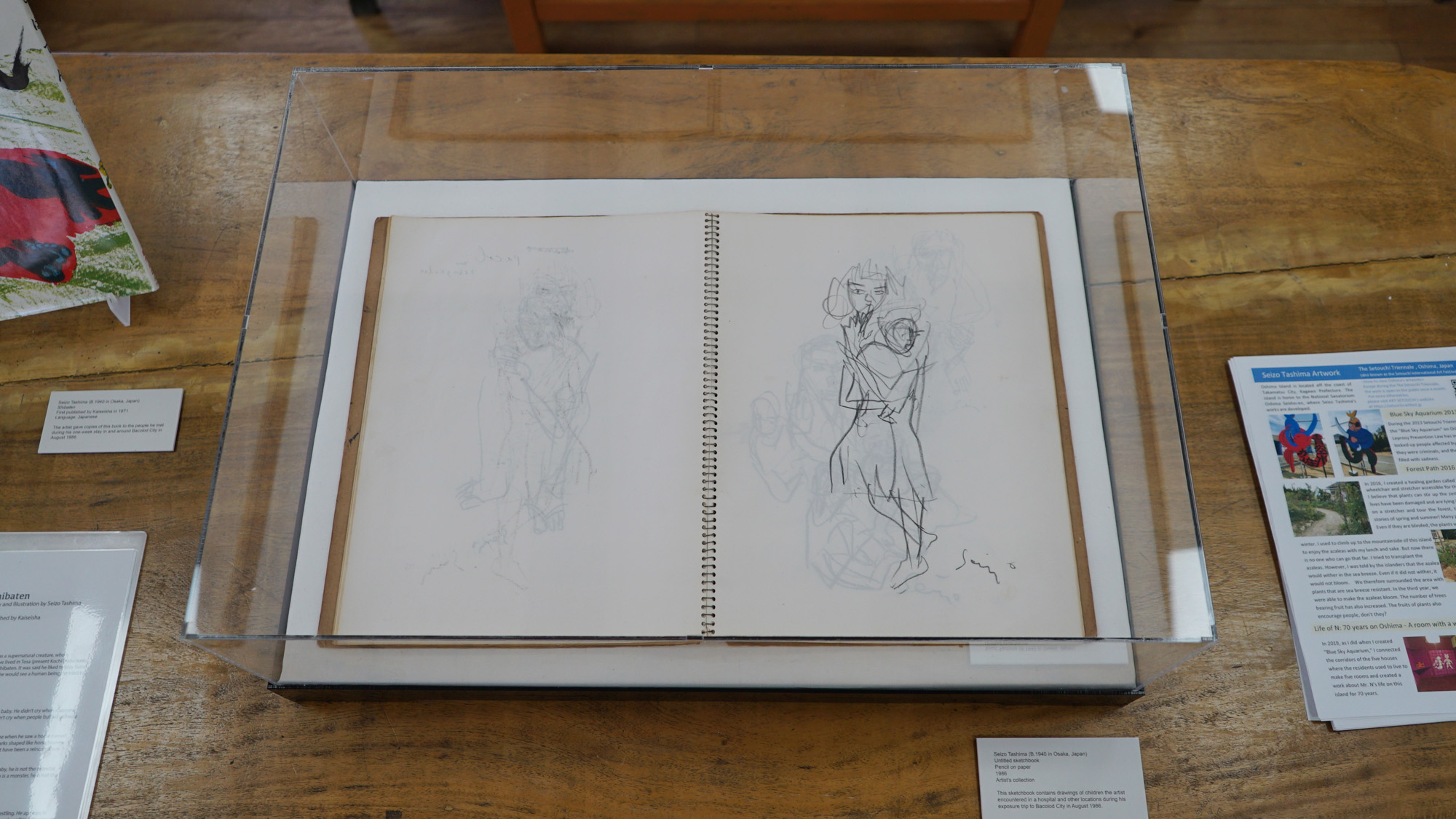
Panultol
Social and economic inequality in Negros Island is deeply rooted in the production of sugar. Urged by this crisis, the members of Black Artists in Asia (BAA)—the founder of the Visayas Islands Visual Arts Exhibition and Conference (VIVA ExCon)—banded together to generate, through culture and art, a force for meaningful social transformation. The BAA began their collective activities in 1986, in the midst of the man-made Negros famine wherein tens of thousands of children suffered severe starvation and many eventually lost their young lives. The BAA upheld the belief that arts and culture should reflect people’s lives, and used their art and exhibition platforms as a tool to tell the world about the plight of the sugarcane workers in Negros. Artists from across the sea, including Japanese artists, shared such a vision and their solidarity helped spread awareness of the cause across borders and prompted international participation in emergency relief efforts as well as longer-term efforts to empower the marginalized.
The materials that were produced, both collectively and individually, in the movement show how the concern for children was the prime mover for the artists’ intuitive actions and sustained commitment. The children depicted in the materials cast a gaze full of individual will toward the viewers, betraying adult expectations of what a child should be. They reflect the artist’s attitude of refraining from echoing both the logic that views children as incomplete adults in the process of becoming and the worldview of adults built upon the hierarchy of the developed over the underdeveloped. The presence of children is imagined here as a mediating entity that invalidates external/internal divisions, inviting us to engage in finding and reading the stories of what might otherwise be buried under the structures built and run by those in power.
The title, Panultol, is a Kinaray-a word meaning “to go to a familiar or unfamiliar place with no maps or directions.” It is a process that is guided by gut feeling or subjective decisions and it can also mean tracing back someone’s ancestors or genealogy. The exhibition, inspired by the layers of meanings embedded in the term, presents artworks, historical materials in personal archives, and newly commissioned works, as well as printed materials from the curator’s ongoing research on international artists' solidarity against children's hunger in the island of Negros in the 1980s and 1990s. It proposes to trace paths paved by individual curiosity, observation, sensitivity, intuition, and commitment, which has guided the artists through the unknown journey under the shared imagination of a livable world for all.
The exhibition is held at: Antique Provincial Library & Local Archives, and the Library Annex
Supported by: Japan Foundation Manila, Outlooke Pointe Foundation, Printerest Design Studio
Special thanks to: Antique Provincial Library & Local Archives, Yqfryd Alvarado, Scarlet Hope Dalumpines, Iris Ferrer, Olive Gloria, Ramie Jiloca aka Apid, Mie Liao, Purita Kalaw Ledesma Center, Grace G. Magullado, Gabi Nazareno, Norberto Roldan, Maria Lourdes Villanueva, Yoshiko Watanabe, Dominic Zinampan
Curated by: Mayumi Hirano
Curatorial coordination: Raz Laude and Bryan Liao
Exhibition design: Load na Dito Projects
Project of VIVA ExCon Antique
The exhibition presents artworks by:
Nunelucio Alvarado, Ramon de los Santos Jr., Ginoe, Tatsuo Inagaki and students from the Faculty of Intercultural Communication at Hosei University, Raz Laude, Touki Roldan, Seizo Tashima, and Ramuel Vego
Artists
Nunelucio Alvarado
Born in 1950 in Sagay, Negros Occidental, Nunelucio Alvarado obtained an Arts degree in Bacolod in 1968 then studied painting at the University of the Philippines - Diliman. For over four decades, he has lived as a full-time artist. Witnessing the injustices in his hometown firsthand, Alvarado portrays dignified working peasants, the Sacadas, and the marginalized.
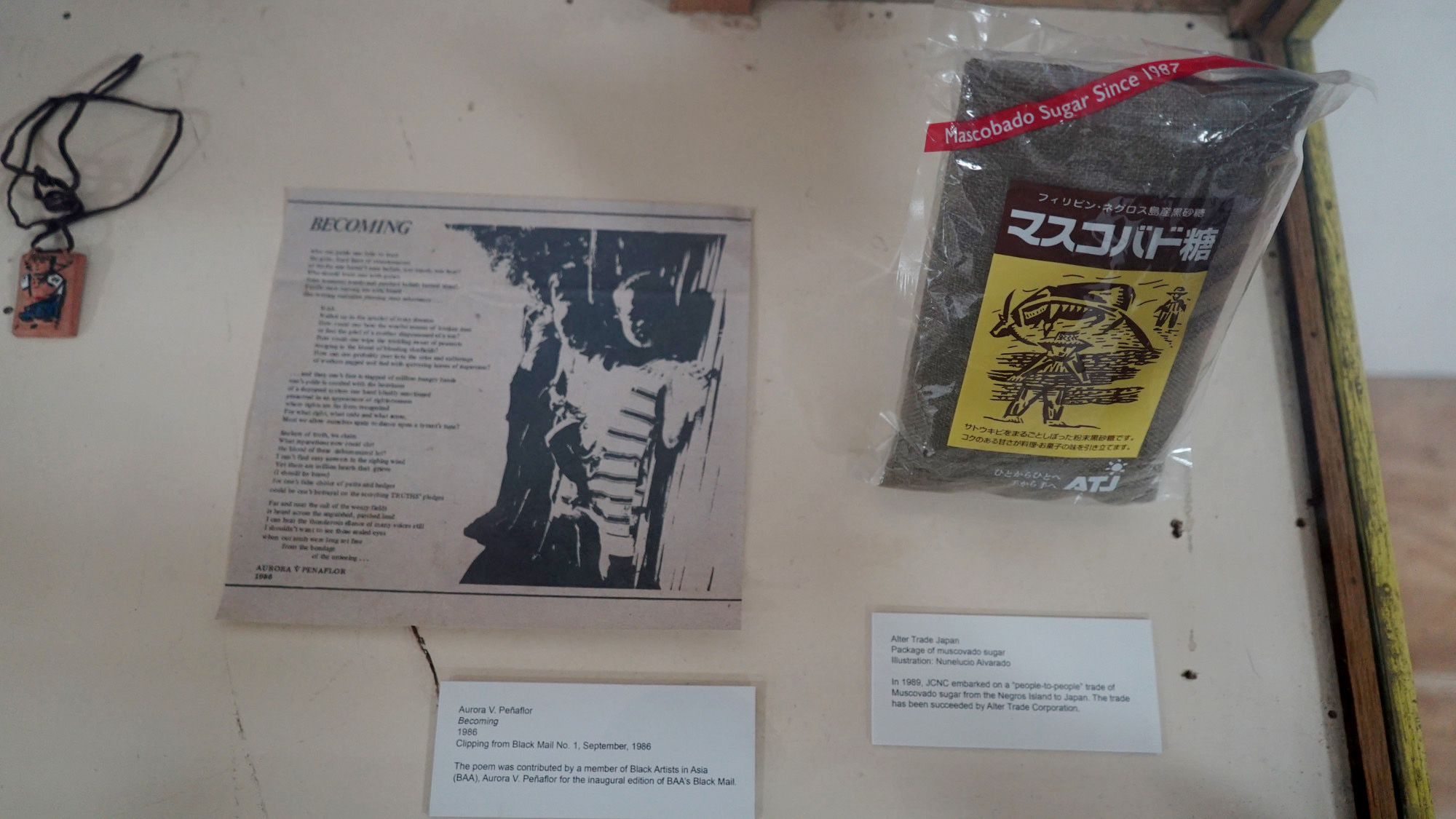
Alter Trade Japan
Package of muscovado sugar
Illustration: Nunelucio Alvarado
Exhibited at the Library Annex
In 1989, JCNC began fair-trading Muscovado sugar and Balangon banana from the Negros Island to Japan, which was succeeded by Alter Trade Corporation (ATC).
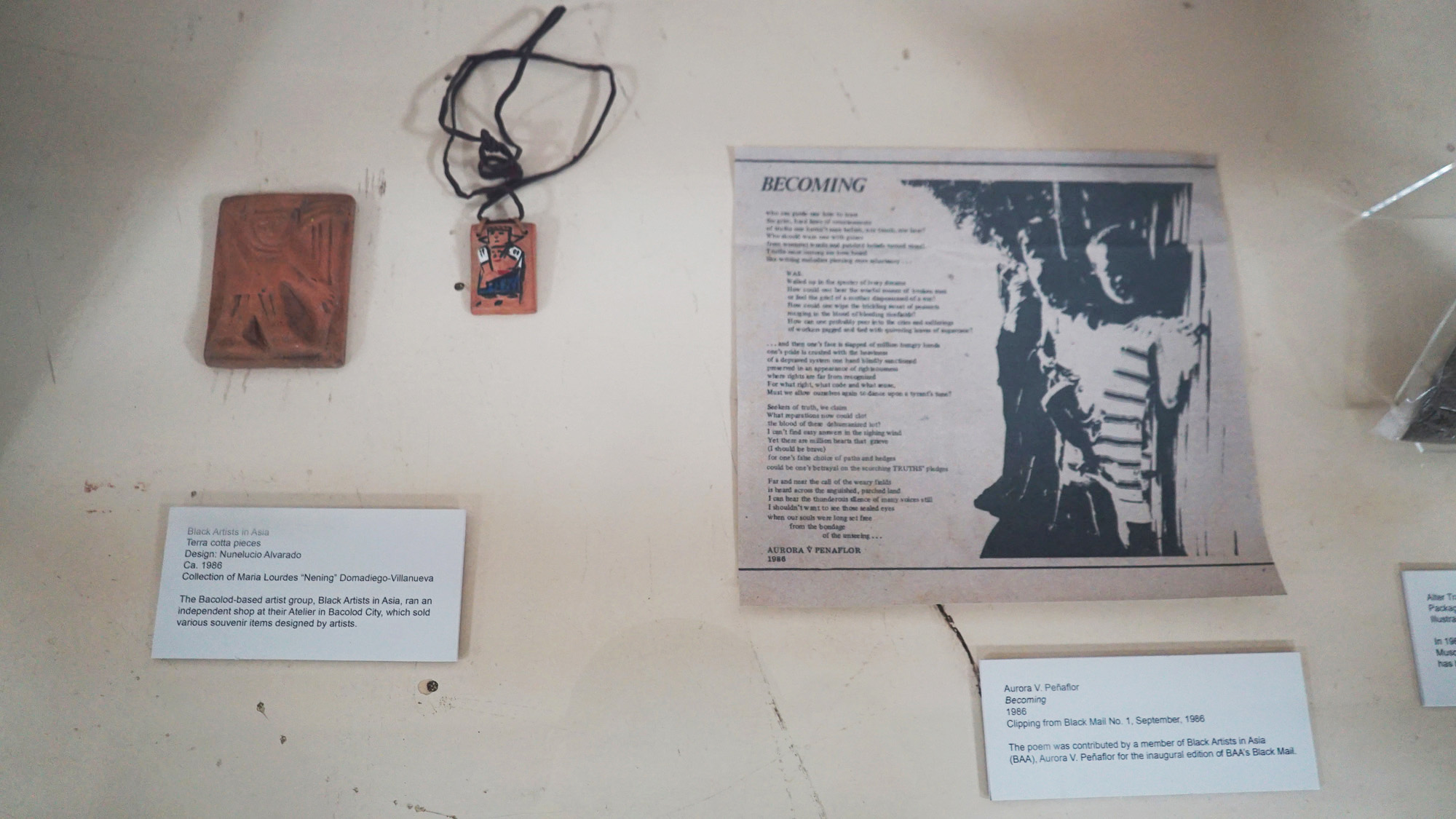
Black Artists in Asia
Terra cotta pieces
Design: Nunelucio Alvarado
Ca. 1986
Collection of Maria Lourdes “Nening” Domadiego-Villanueva
Exhibited at the Library Annex
The Bacolod-based artist group, Black Artists in Asia, ran an independent shop at their Atelier in Bacolod City, which sold various souvenir items designed by artists. Workshops and lectures were also held at the Atelier.
Ramon De Los Santos, Jr.
Ramon O. De Los Santos, Jr. (B. 1974, San Jose, Antique, Philippines) is an artist who works in a variety of media. By using themes about social realism and traditional lifestyles of Antique as well as the country such as the indigenous people, farmers, fisher folks, laborers, street children, traditional beliefs and practices, Ramon tries to preserve the unique culture of his land through expressions of everyday inspirations with figurative abstractions and nonfigurative expressionism.
His works often refer to pop and mass culture. Using drawn symbols, a world where light-heartedness rules and where rules are undermined is created. By examining the ambiguity and origination via retakes and variations, he touches various overlapping themes and strategies.

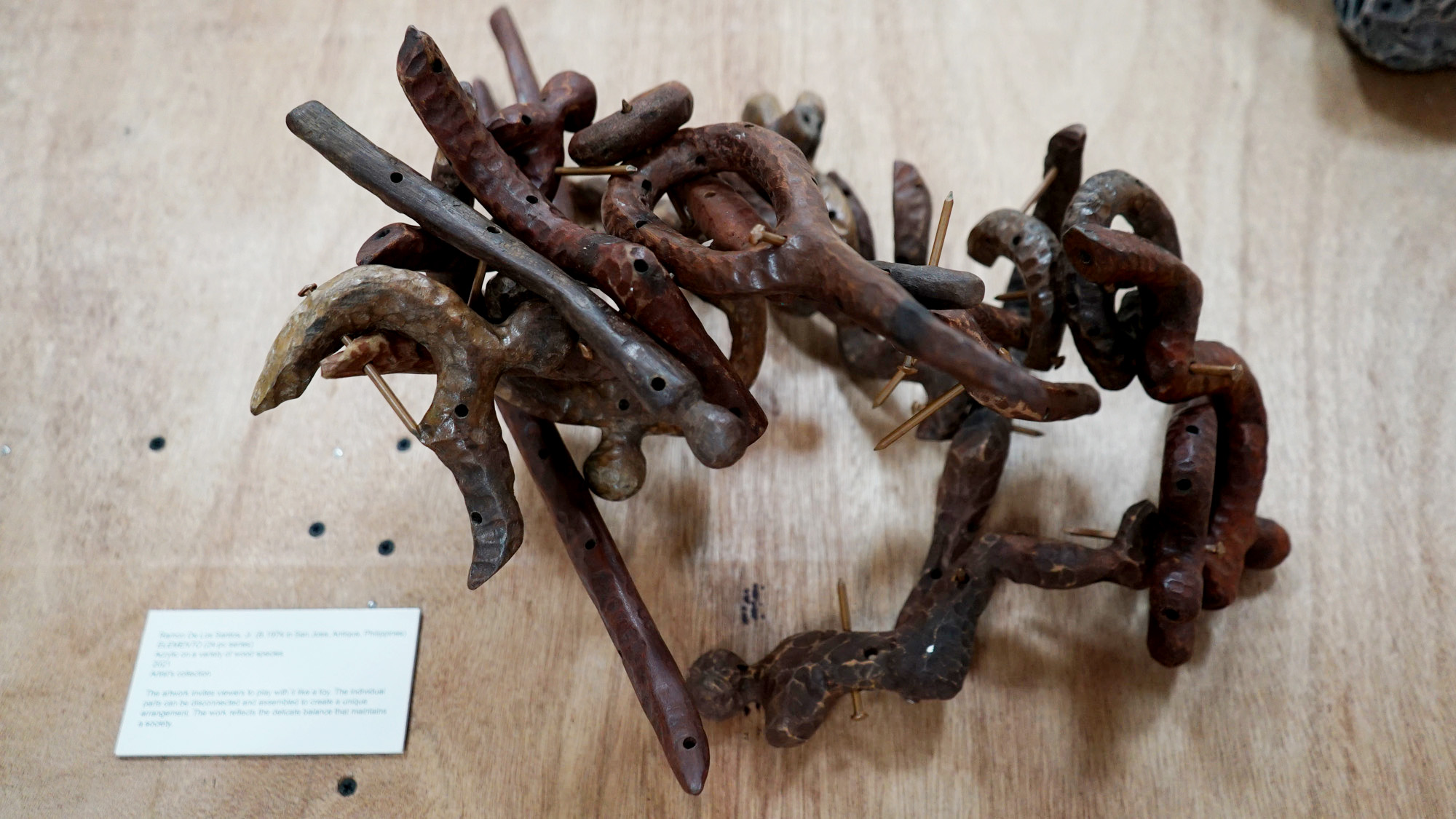

Ramon De Los Santos, Jr.
ELEMENTO (24-pc series)
Acrylic on a variety of wood species
2021
Artist’s collection
Exhibited at the Library Annex
This art piece depicts a society. Each piece is adjoined to each other to form a certain community, tribe, or clan. If one member of ELEMENTO is detached, then the whole nation will fall. The artwork is a toy. One can disconnect and assemble it to create another unique arrangement. Each piece has holes on it and could be linked to another piece by inserting nails. It could be played by one or two persons and could be arranged with two pieces, with three or more. (Artist’s statement)
Ginoe
Ginoe also known as Hubineer in online spaces (b. 1995) is a poet, artist, graphic designer, printmaker and community organizer born in Leyte and currently based in Makati, Philippines. They work with found objects, scanography, textile, painting, drawing and printmaking to come up with their visual and conceptual assemblages. Ginoe’s works are hinged on the material culture of their locality (books, printed ephemera, personal archives, residue of consumption, folk religious objects) and transmutes them to form works that are tinged with cheeky defiance.



Ginoe
Batano
Interactive installation
2023
Exhibited at the Library Annex
Batano is an interactive installation work employing stamps as a way of emblem-making. Informed by my month-long stay in Taiwan and my father’s quarter-century service to the Philippine government, I compiled a set of rubber stamps with words and images associated with Antique/Visayan communities. Batano employs a collection of images and words that exist in two worlds – the authoritative taxonomy of government stamps and the esoteric visual vernacular of our amulets also known as anting-antings. This works presents the possibilities of conflict, parallelism and commonality between these two types and interrogates how authority, mysticism, self-preservation, and power intersect and disperse in different directions.
Batano is a Hiligaynon term used in games as a marker or avatar for one or more players. It is usually a found object, like a fragment of a bone, a stone, a piece of glass; or sometimes, a token. Batano as a work tries to gauge the relevance of a word or an image to an individual, how one gravitates towards certain symbols and aligns with them subconsiously. (Artist’s statement)
Tatsuo Inagaki Seminar, Faculty of Intercultural Communication, Hosei University, Tokyo, Japan
Inagaki Seminar in the Representational Culture Course of the Faculty of International Cultural Studies at Hosei University is engaged in a variety of activities, including artworks and workshops in collaboration with the community and individual productions, with "communication and art" as the keywords.
The seminar members: Tatsuo Inagaki, E ki Wong, Shoji Kiiko, Suzuno Riri, Rei Takamizawa, Minori Fukuju, Lyu Tonglin, Saaya Ito, Kim Sunhee, Kano Hayashi, Kayo Tokunaga, HUANG Yinan, Hiyo Kitajima, Chiharu Kubota, Amina Akizuki, Hiroto Nakamura, Yu Hyojin, Aoi Hirano.
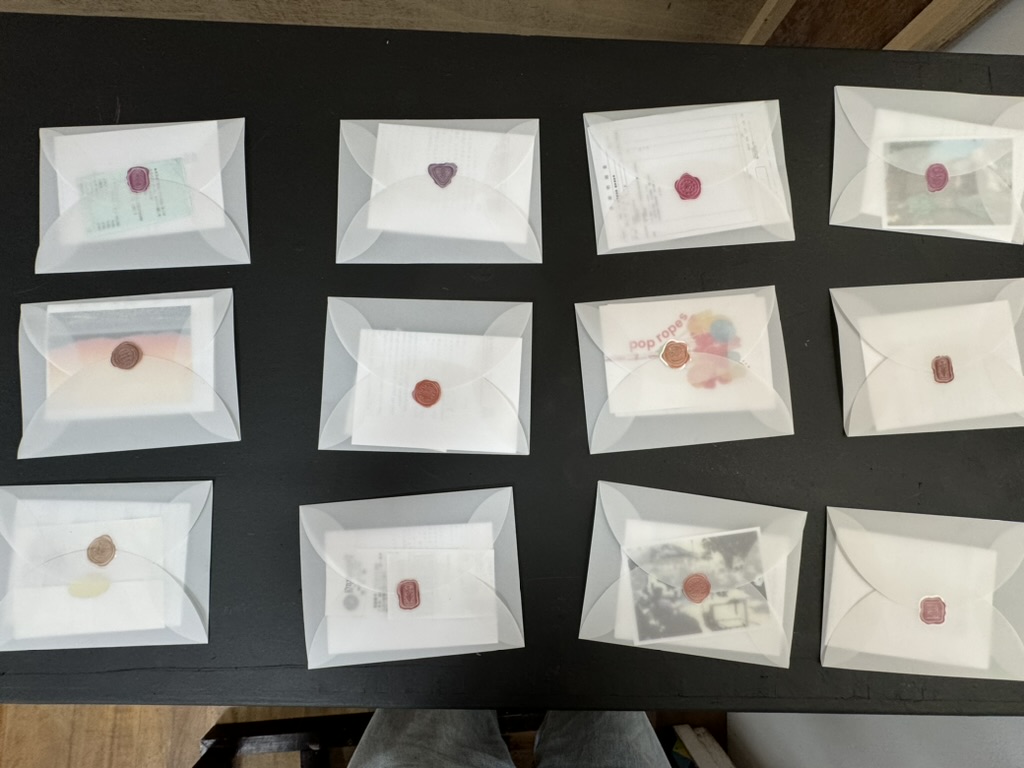

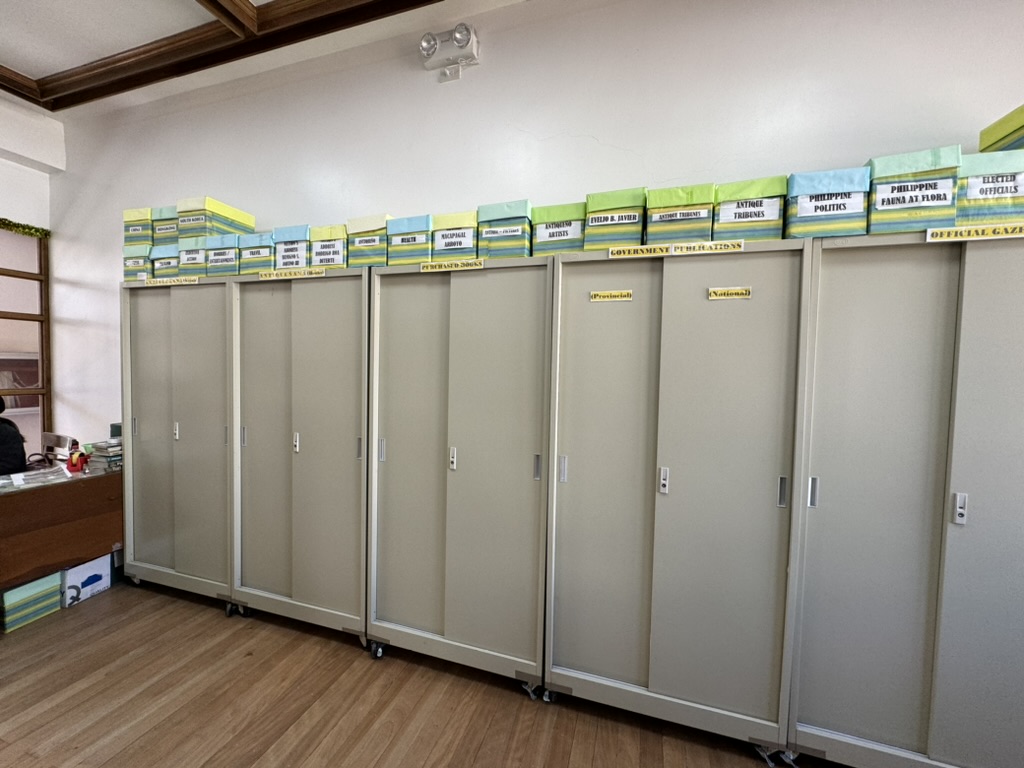

Photo by Tatsuo Inagaki
Tatsuo Inagaki Seminar, Faculty of Intercultural Communication
Hosei University, Tokyo, Japan
Dear ____. Enclosure: ____.
2023
The Inagaki Seminar of the Faculty of Intercultural Studies at Hosei University has been thinking about the meaning and ideal state of an exhibition held at a time of social difficulties and has had many discussions regarding the creation of a work of art remotely.
The work, Dear ___. Enclosure:___. is a performative work on the theme of communication, which intersects the analog methods that are now being replaced by digital and current communication through social networking sites. The work will be exhibited among the many books in the collection of the Antique State Library and in a secret location in the library that is not immediately apparent.
Letters, objects, and sketchbooks secretly brought from Japanese university classrooms will serve as communication tools connecting visitors to the Antique State Library with students from China, Korea, Hong Kong, and Japan who are members of the Inagaki Seminar. Dear ___. Enclosure: ___. is a work that has the potential to last not only for the duration of the exhibition but to continue into the future, 10 or 20 years from now. (Artist statement)

Touki Roldan
Touki Roldan (b. 1982, Philippines) is a visual artist / graphic designer. He explores different ideas through design and image making. He co-runs Habul sang Huni, an artist initiative for alternative learning and creative projects based in Bacolod City.
He has been active in designing for Green Papaya Art Projects (2015-2020), and has contributed in the creative materials for contemporary art platforms like Jejak-Tabi Exchange (2020), KANTINA (2020), and ABungalow Residency Projects (2023). He has exhibited his works in various group shows in Manila, Bacolod, Iloilo and Roxas—including the Visayas-wide biennale, VIVA EXCON (2018 & 2020).
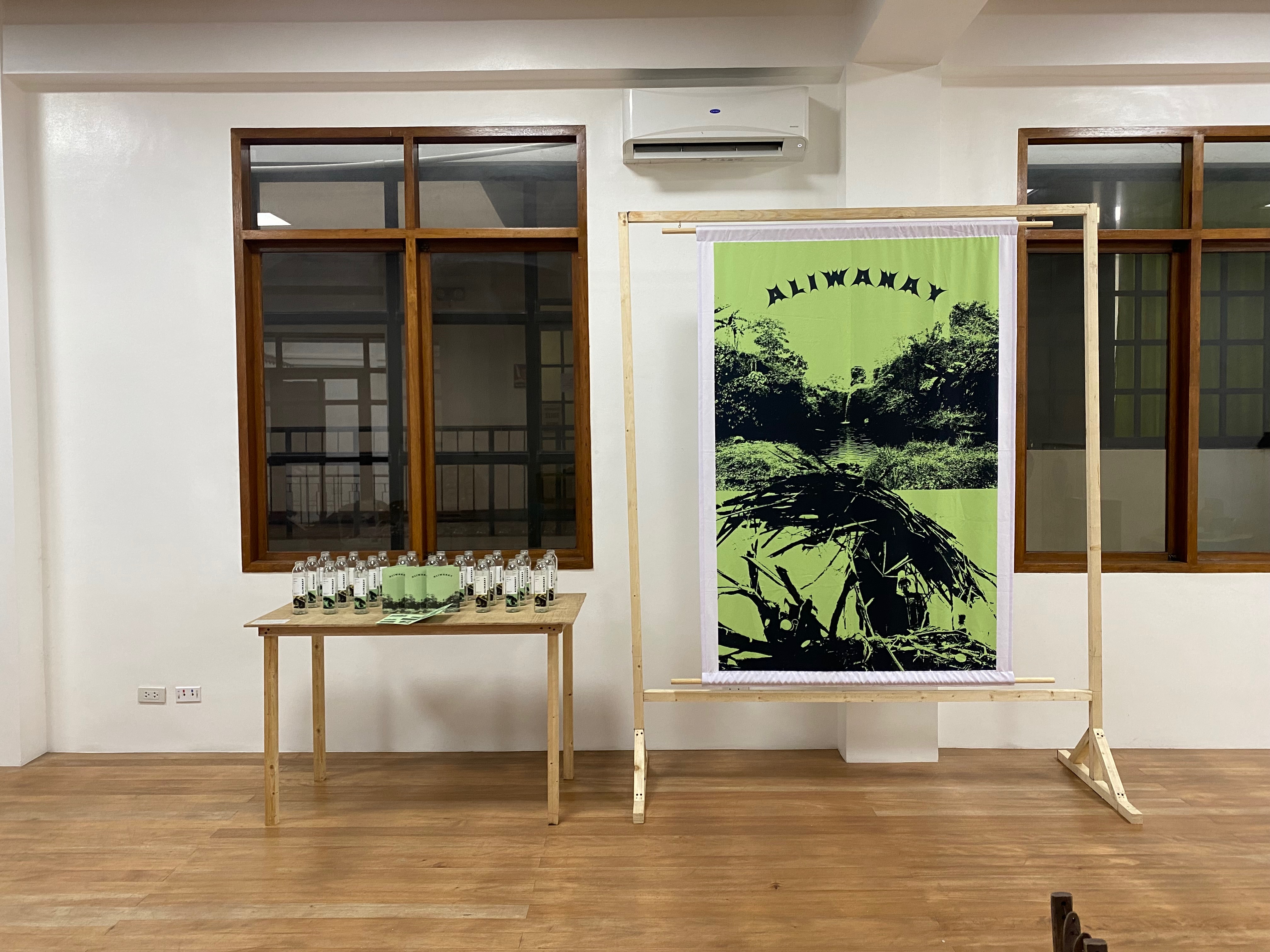
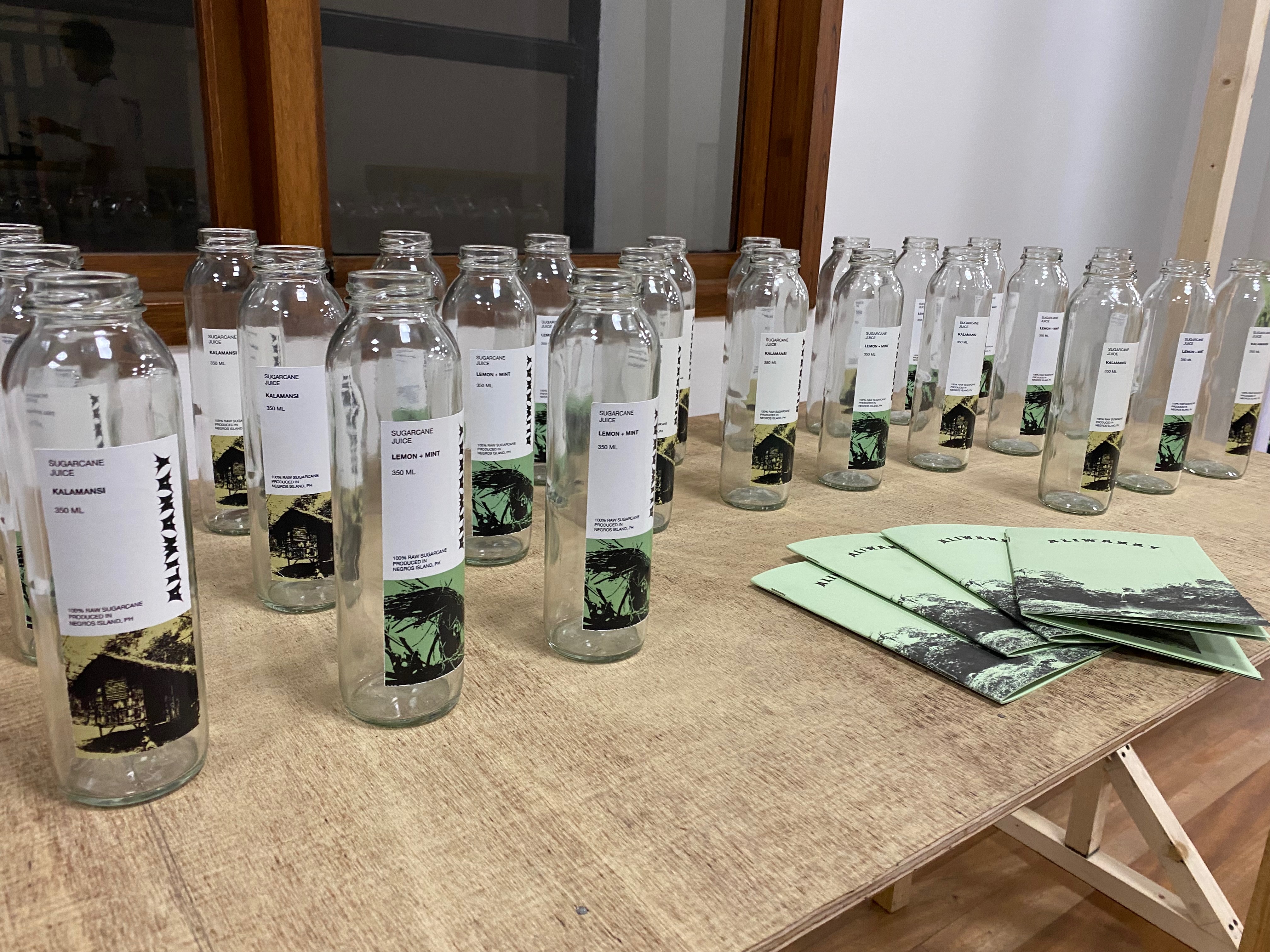
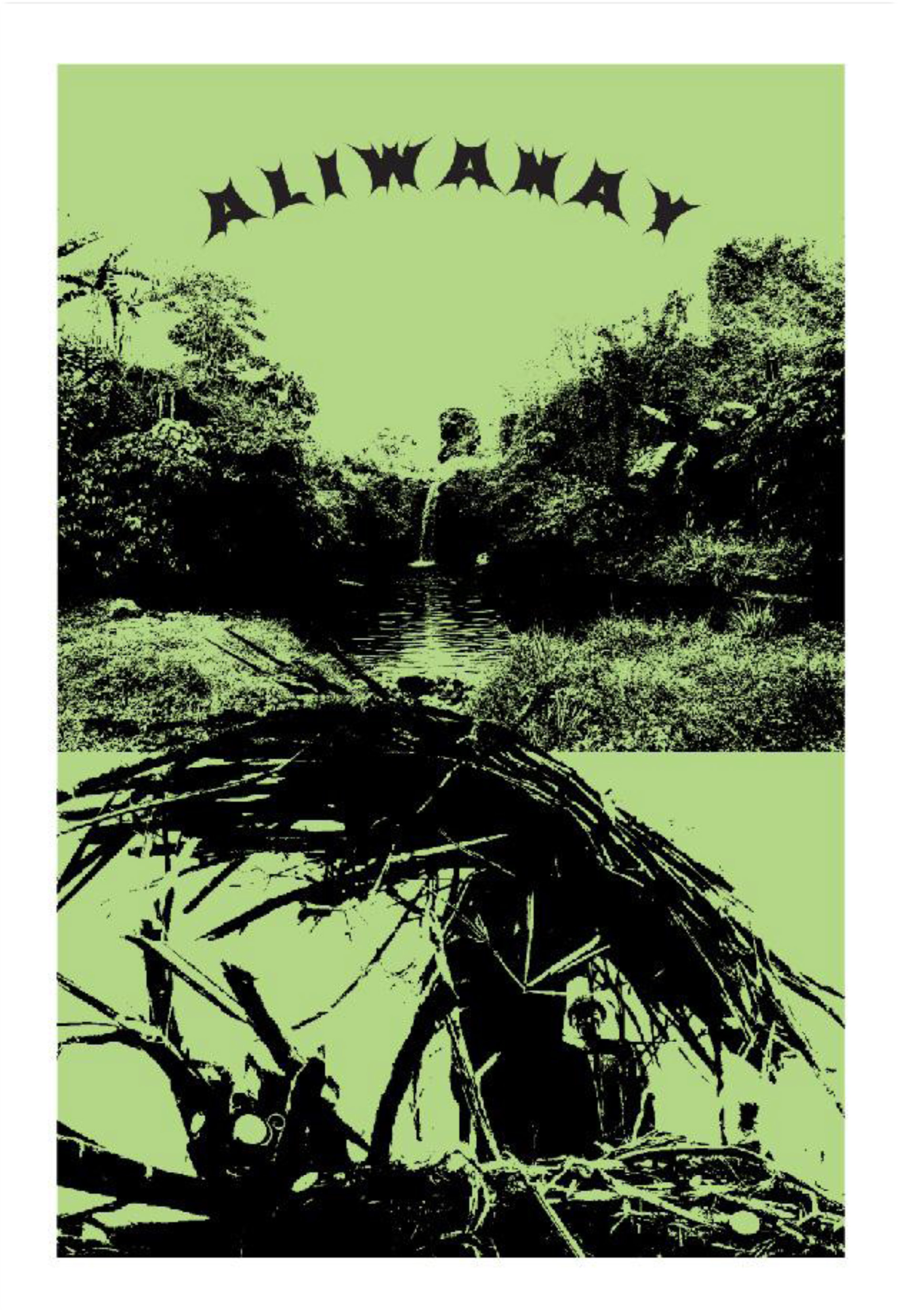
Touki Roldan
Aliwanay
Digital print on fabric, zine
2023
Exhibited at the Library Annex
Growing up surrounded by sugarcane farms, the taste of the tubo connects me to a time, a place, and a feeling of home. Aliwanay is a fictional product born out of a creative inquiry on sugarcane juice, and a continuous search for that taste of memory.
Digitally printed on the fabric is an imaginative product branding for a local juice bar that serves freshly squeezed sugarcane juice. I named it Aliwanay (in Hiligaynon means width, breath, or spaciousness) which is reminiscent of the sitio where my mother’s farm in Sagay is. In an accompanying zine, I share a guide on how to naturally make sugarcane juice without a heavy machine, the insights regarding this inquiry, and my thoughts on reconnecting. (Artist’s statement)
Seizo Tashima
Seizo Tashima was born in 1940 in Osaka, Japan. The experience of living in the abundant nature in Kochi during his boyhood is still the source of creation for TASHIMA. Tashima has created picture books and magnificent artworks using natural materials in his creative activity for half-a-century. Awards received include the Golden Apples Award in the 2nd Biennale of Illustrations Bratislava (BIB) for his picture book “Strongman Taro (Chikarataro)” in 1969, Kodansha Publishing Cultural Award, Shogakukan Painting Award, Ehon Nippon Award, and Iwaya Sazanami Bungei Award. Tashima opened Hachi & Seizo Tashima Museum of Picture Book Art in ETAT2009, Blue Sky Aquarium in Oshima, Kagawa in Setouchi Triennale 2013 followed by the production of “Forest Path” and “Life of N: 70 years on Oshima – A room with a wooden pot”. In 2020, Tashima was shortlisted for The Hans Christian Andersen Awards. In 2021, his picture book “I Gotcha” won the Sankei Juvenile Literature Publishing Culture Award/Art Prize and the 56th ENEOS Children’s Culture Award.
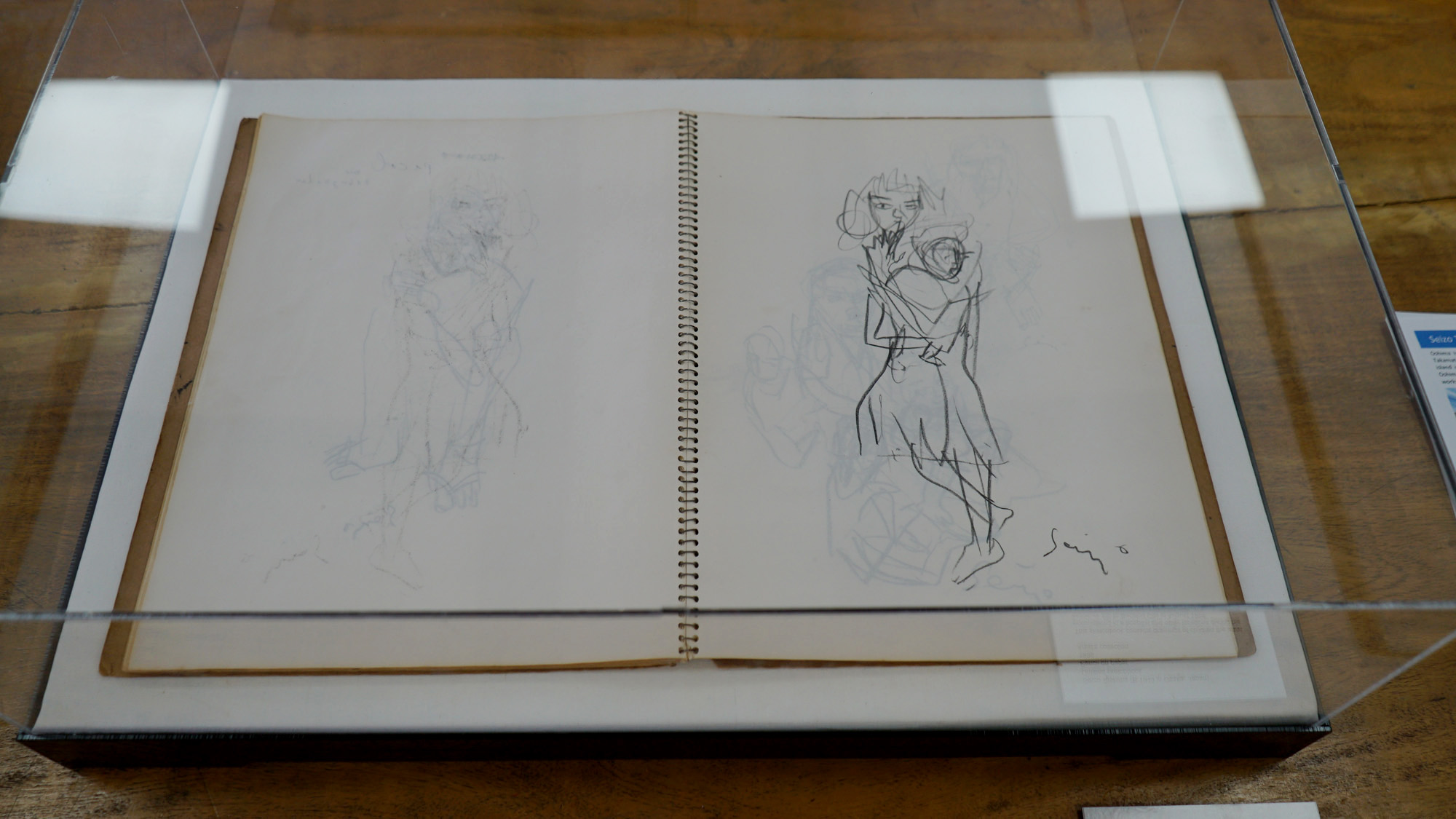
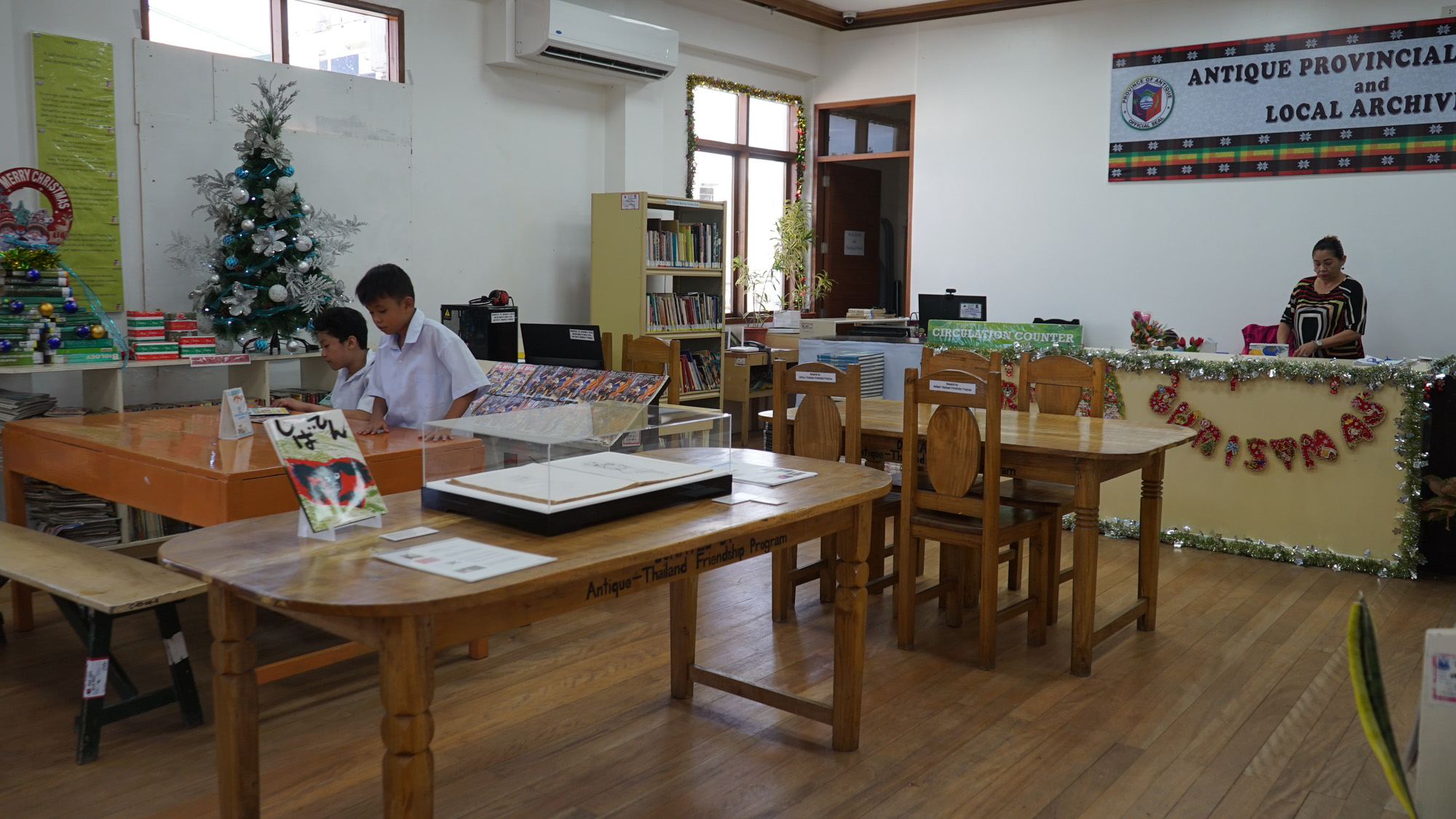
Seizo Tashima
Untitled sketchbook
Pencil on paper
1986
Artist’s collection
Exibited at the Library
This sketchbook contains drawings of children Seizo Tashima encountered in a hospital and other locations in Bacolod in August 1986 during the exposure tour organized by the Japan Committee for Negros Campaign (JCNC), a NGO incorporated on February 25, 1986, for emergency relief work for the displaced sugarcane workers and their children who suffered malnutrition in Negros Island.
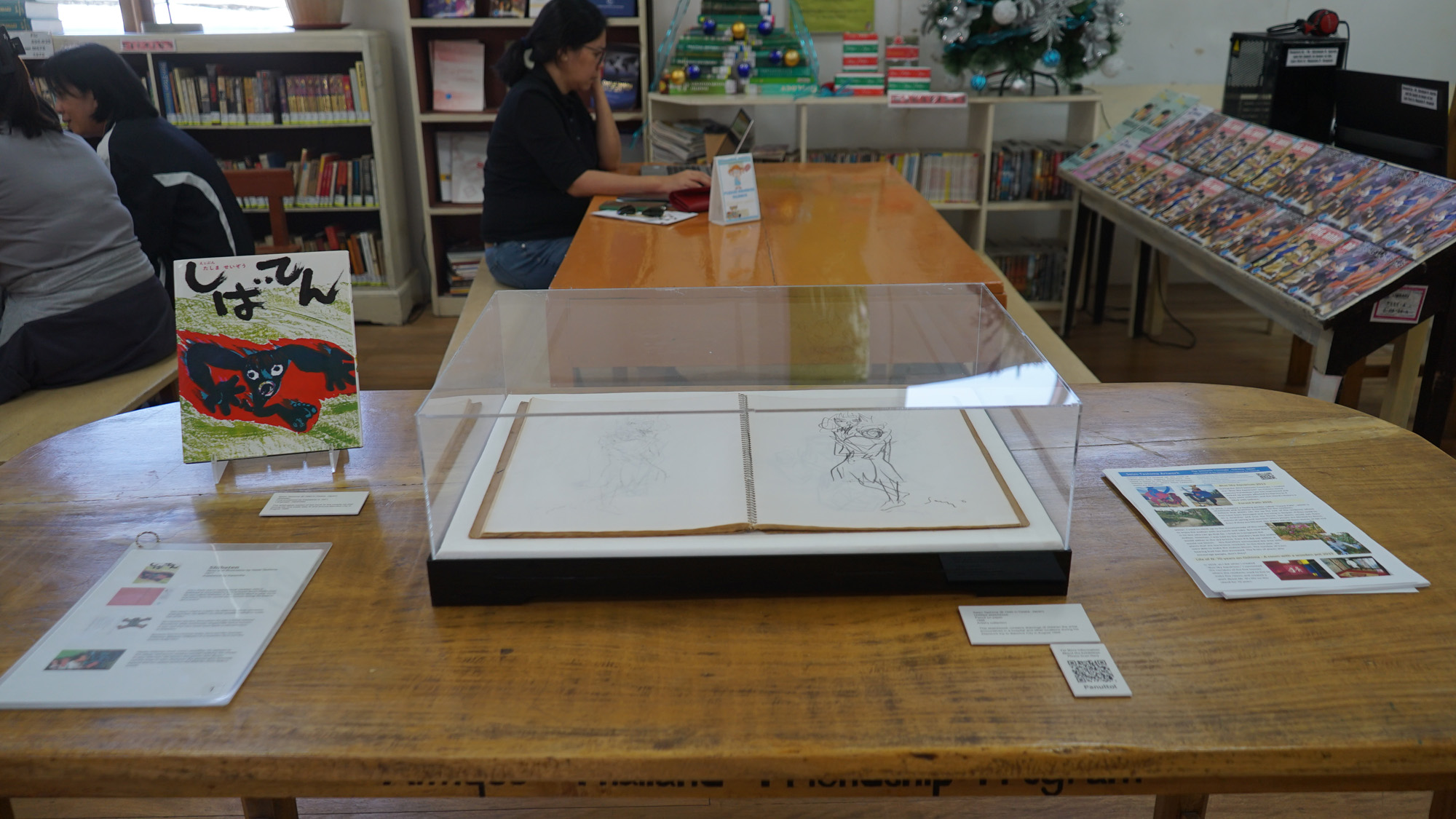
Seizo Tashima
Shibaten
First published by Kaiseisha in 1971
Language: Japanese
Exibited at the Library
Seizo Tashima has published about 110 children’s picturebooks in his artistic career spanning six decades. Shibaten is the first picture book he printed on a lithograph in 1962 while studying art at university. Shibaten is a fictional story of a child called a monster and outcasted by the villagers. Illustrated by vivid colors and bold forms, the book tells about the persistence of social inequality and betrays the conventional expectation that a children’s picture book should end with hope and happiness. Tashima gave copies of this book to the people he met during his trip to Negros Occidental in August 1986.
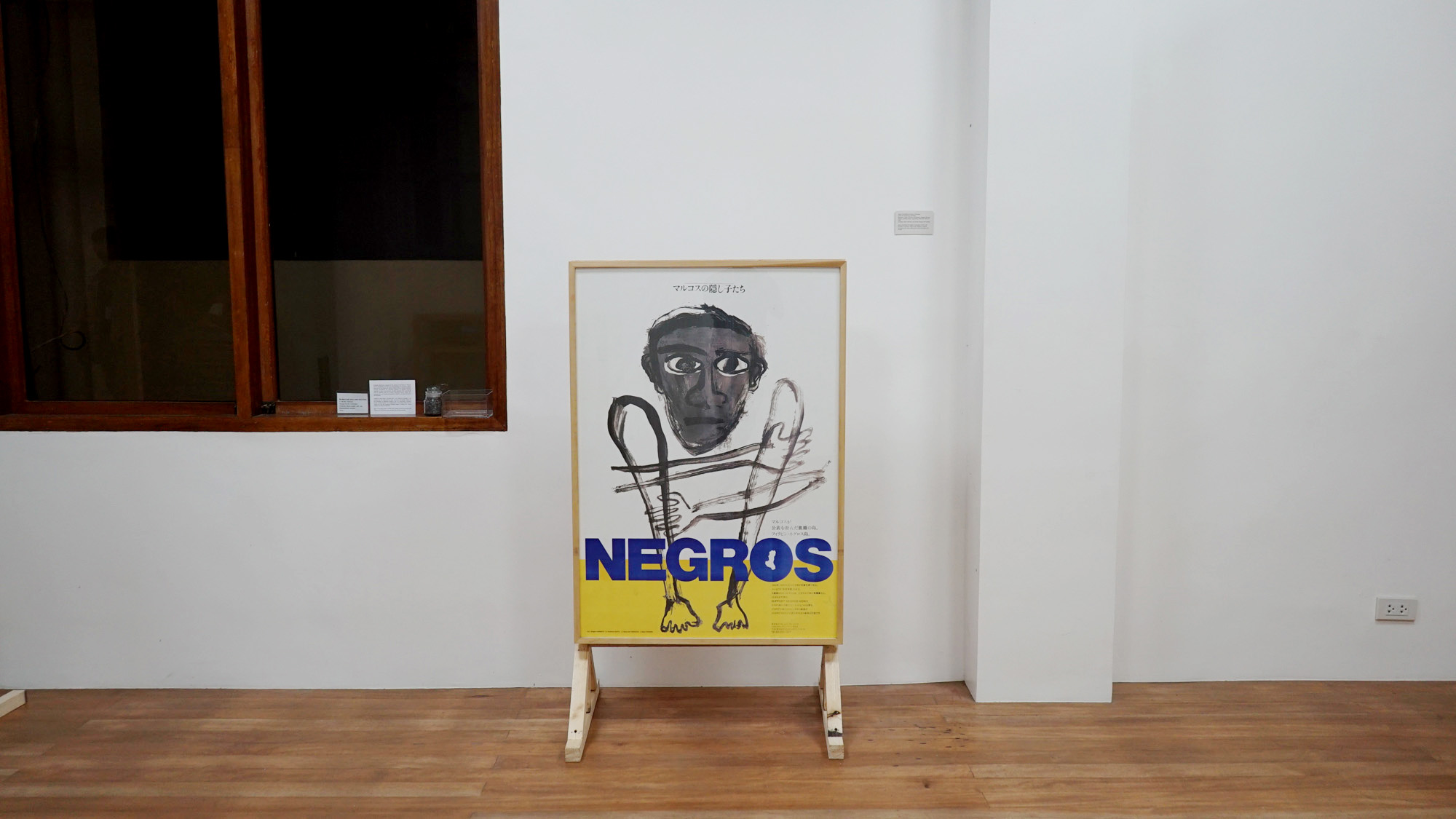
Japan Committee for Negros Campaign
Poster for fundraising campaign
Illustration: Seizo Tashima; Art Direction: Shigeru Akimoto; Design: Yoshihiro Saito; Copywriting: Moto-omi Takeuchi
1986
Courtesy: Seizo Tashima, and Green Papaya Art Projects
Exhibited at the Library Annex
The Japan Committee for Negros Campaign (JCNC) was founded in February 1986 to help children in Negros Occidental who were suering from food shortages and hunger. Japanese and Filipino artists supported the campaign by contributing their artworks for promotion and fundraising. Japanese picture book artist Seizo Tashima created the iconic illustration for the campaign poster.

Freedom, 2023
Black charcoal, coffee, shell powder and acrylic on Manila paper
Ramuel Vego
Ramuel D. Vego lives in Sibalom, Antique, Philippines. Born on Sept. 1965. He is a self-made man. He developed his artistic skills from a very early age and was encouraged to pursue his passion through the support of family and friends. All through out his career he never stopped experimenting and learning from other artists. He is sill exploring and developing his artistic style. To broaden his knowledge he ventured into other fields of interest to draw inspiration like construction, farming etc.
He is aiming to not simply paint on the flatsurface of the canvas but to explore and express the deeper secrets of the universe through his art. To witness and show the wonders of creation and its eternal mystery.
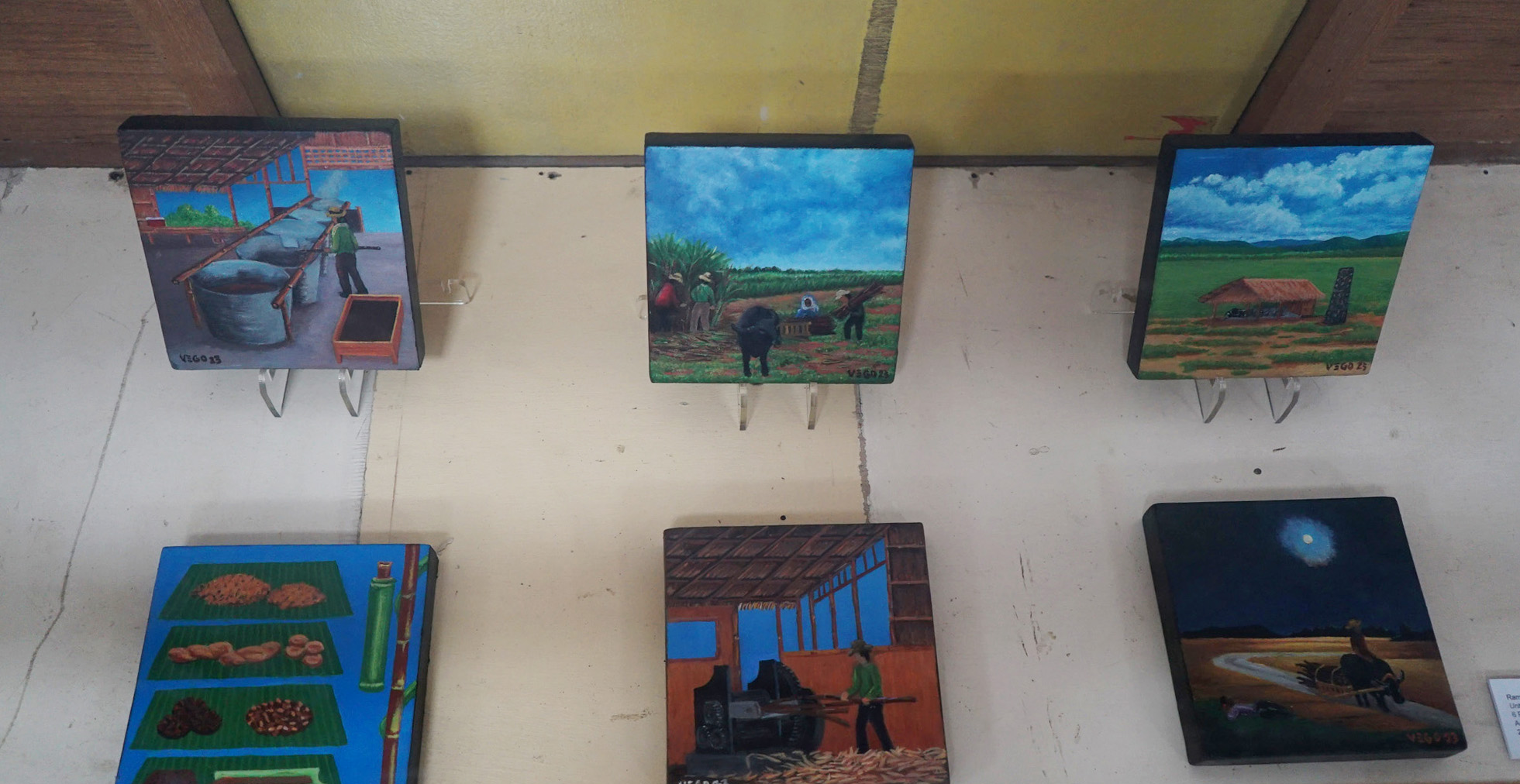
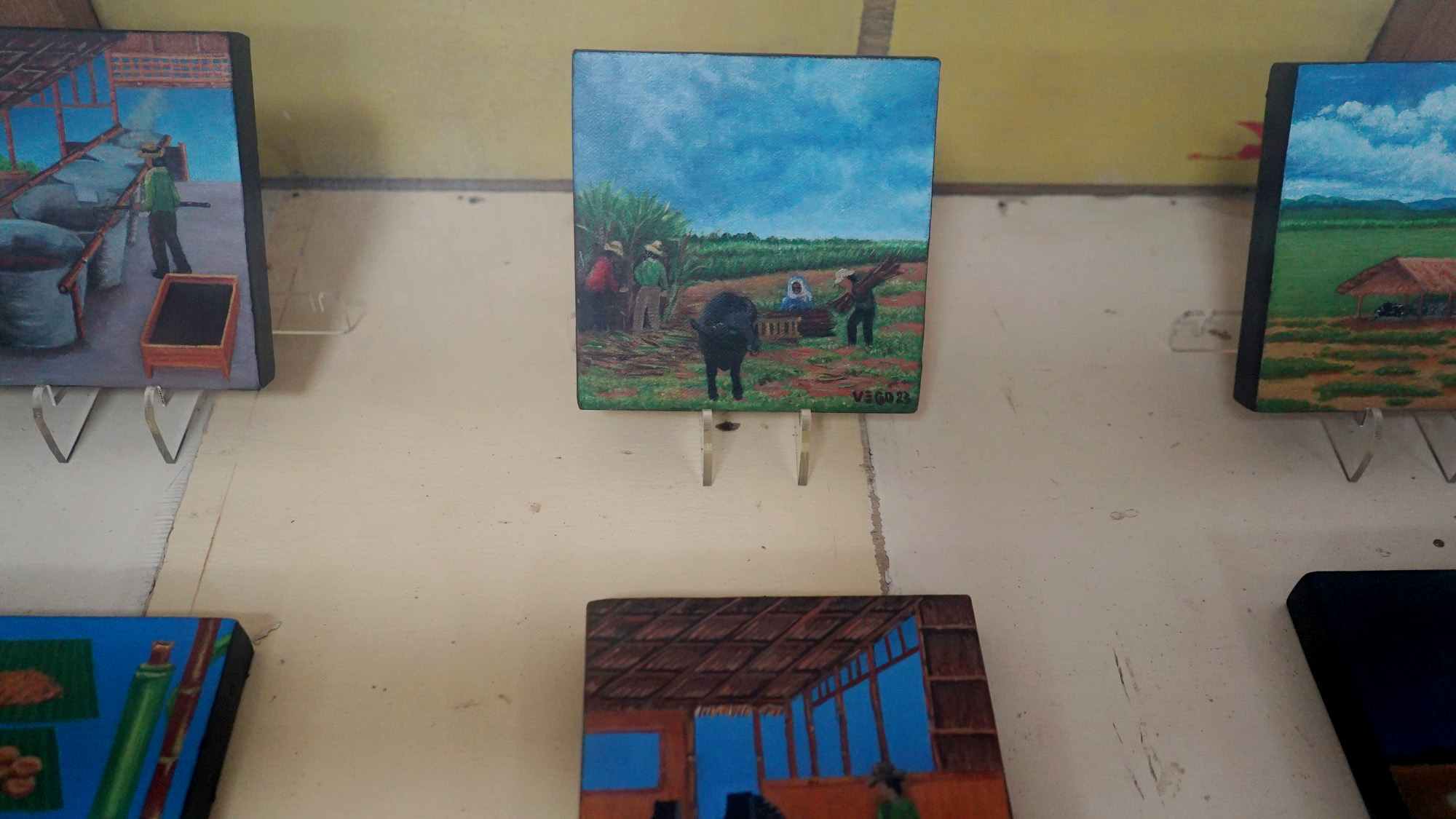
Other works

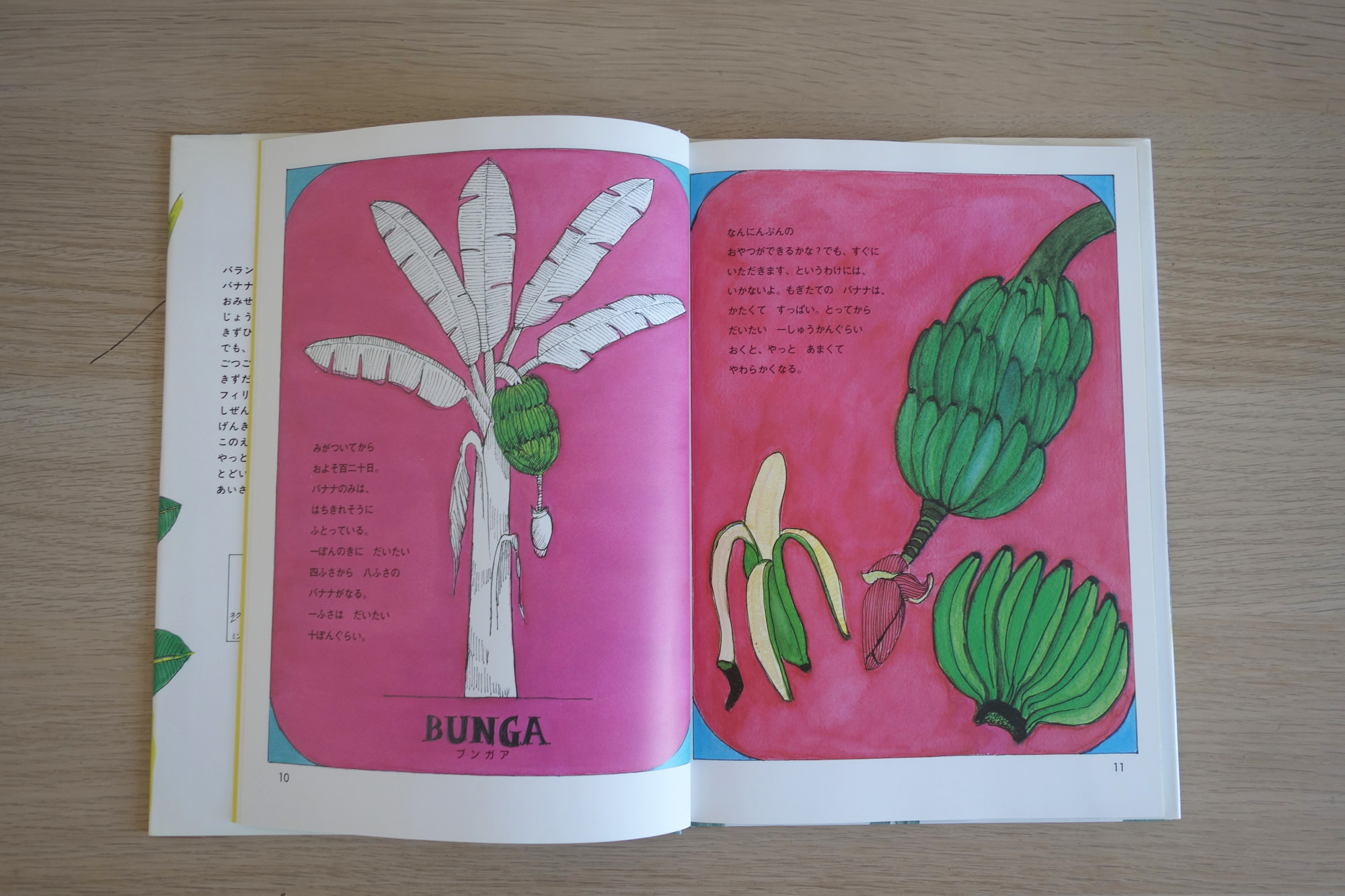

Balangon - A Picture Book of Bananas
Illustration by Balangon Workshop
Text by Hotta Masahiko and Kiri Kojima
First published in 1993 by Shinpyosha
Language: Japanese
Exhibited at the Library
The Japan Committee for Negros Campaign (JCNC) began the “people-to-people” trading of Balangon banana from the Visayas to Japan, which was later succeeded by Alter Trade Corporation (ATC). Balangon - A Picture Book of Bananas was published as an educational tool to inform the Japanese youth about the stories of the growers/harvesters of balangon bananas living at the foot of Mt. Kanlaon. The book was a collaborative project of Japanese writers, and Filipino artists grouped together as Balangon Workshop. The members of the Balngon Workshop included Filipino artists and cultural workers Brenda Fajardo, Manuel Pambido, Noel Cuizon, Bong Dazo, Angelo Dazo, Ida Bugayong, Prospero Covar, and Manuel Chavez.
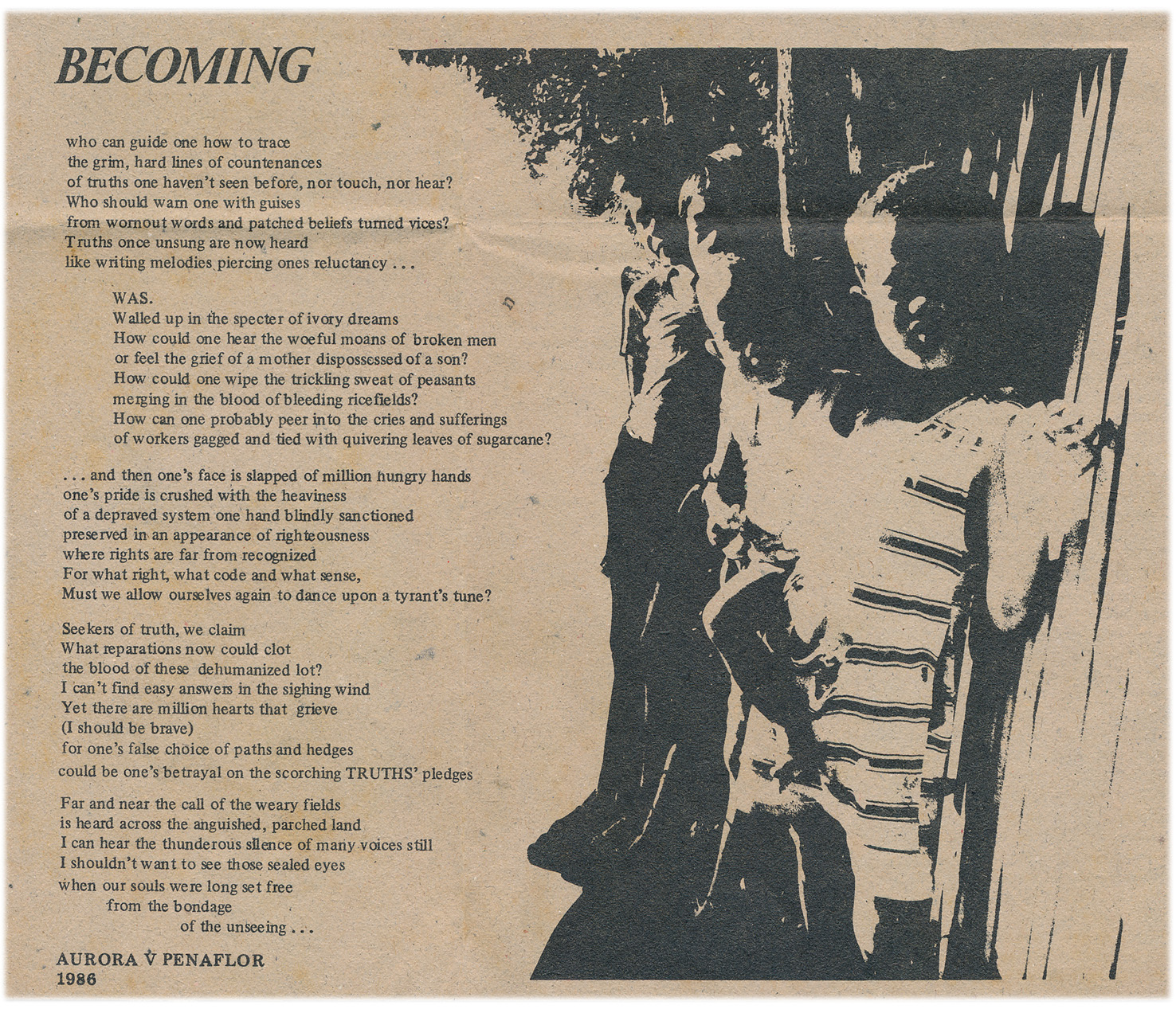
Aurora V Penaflor
Becoming
1986
Clipping from Black Mail No. 1, September, 1986
The poem was contributed by a member of Black Artists in Asia (BAA), Aurora V. Penaflor for the inaugural edition of BAA’s Black Mail.
Thank you to:




